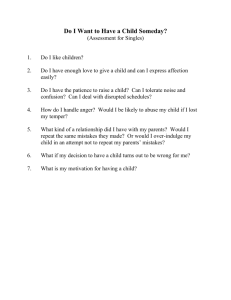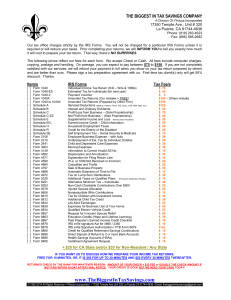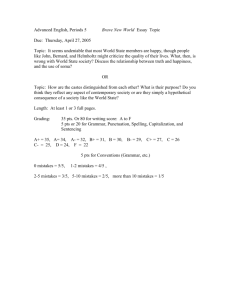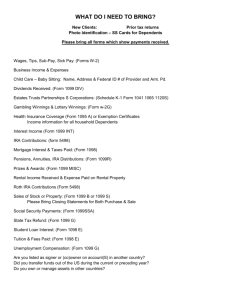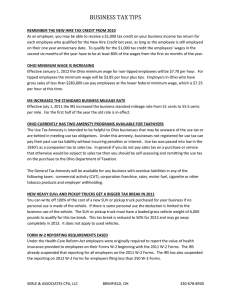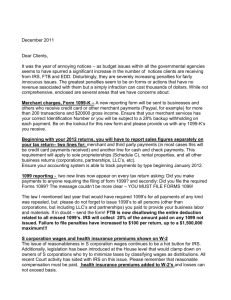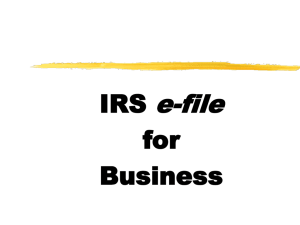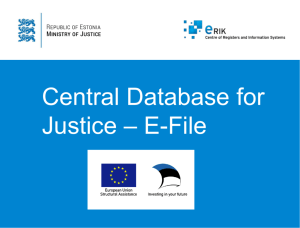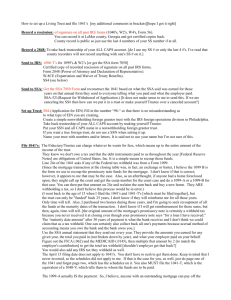9 Innocent Tax Return Mistakes That Trigger IRS Problems
advertisement
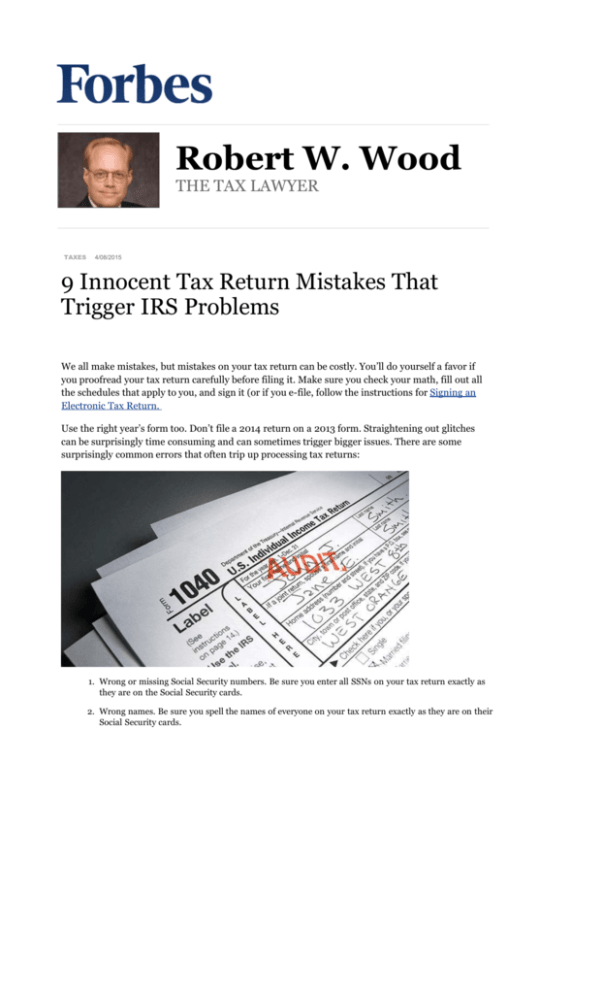
Robert W. Wood THE TAX LAWYER TAXES 4/08/2015 9 Innocent Tax Return Mistakes That Trigger IRS Problems We all make mistakes, but mistakes on your tax return can be costly. You’ll do yourself a favor if you proofread your tax return carefully before filing it. Make sure you check your math, fill out all the schedules that apply to you, and sign it (or if you e-file, follow the instructions for Signing an Electronic Tax Return. Use the right year’s form too. Don’t file a 2014 return on a 2013 form. Straightening out glitches can be surprisingly time consuming and can sometimes trigger bigger issues. There are some surprisingly common errors that often trip up processing tax returns: 1. Wrong or missing Social Security numbers. Be sure you enter all SSNs on your tax return exactly as they are on the Social Security cards. 2. Wrong names. Be sure you spell the names of everyone on your tax return exactly as they are on their Social Security cards. 3. Filing status errors. Some people use the wrong filing status, such as Head of Household instead of Single. The Interactive Tax Assistant on IRS.gov can help you choose the right one. Tax software helps e-filers choose. 4. Math mistakes. Double-check your math. For example, be careful when you add or subtract or figure items on a form or worksheet. Tax preparation software does all the math for e-filers. 5. Errors in figuring credits or deductions. Many filers make mistakes figuring their Earned Income Tax Credit, Child and Dependent Care Credit, and the standard deduction. If you’re not e-filing, follow the instructions carefully when figuring credits and deductions. For example, if you’re age 65 or older or blind, be sure you claim the correct, higher standard deduction. 6. Wrong bank account numbers. You should choose to get your refund by direct deposit. But it’s important that you use the right bank and account numbers on your return. The fastest and safest way to get a tax refund is to combine e-file with direct deposit. 7. Forms not signed or dated. An unsigned tax return is like an unsigned check – it’s not valid. Remember that both spouses must sign a joint return. 8. Electronic filing PIN errors. When you e-file, you sign your return electronically with a Personal Identification Number. If you know last year’s e-file PIN, you can use that. If not, you’ll need to enter the Adjusted Gross Income from your originally-filed 2012 federal tax return. Don’t use the AGI amount from an amended 2012 return or a 2012 return that the IRS corrected. 9. Mismatches between your tax return and Forms 1099. These key forms come in many varieties, and they are important. For interest and dividends there are Forms 1099-INT and 1099 DIV. And the granddaddy of them all, Form 1099-MISC. With each 1099, the IRS receives a copy. If you forget to include 1099 income on your return, expect a notice. It may include penalties and will almost surely include interest. It can even trigger a more comprehensive audit. Be careful. Tax returns are filed under penalties of perjury. Simple reporting problems can lead to crippling mistakes that can cost big. The law has elaborate Form W-2 and Form 1099 reporting rules to serve as checks and balances. Yet a huge part of our tax system is about self-reporting. For alerts to future tax articles, follow me on Forbes. You can reach me at Wood@WoodLLP.com. This discussion is not intended as legal advice, and cannot be relied upon for any purpose without the services of a qualified professional.


